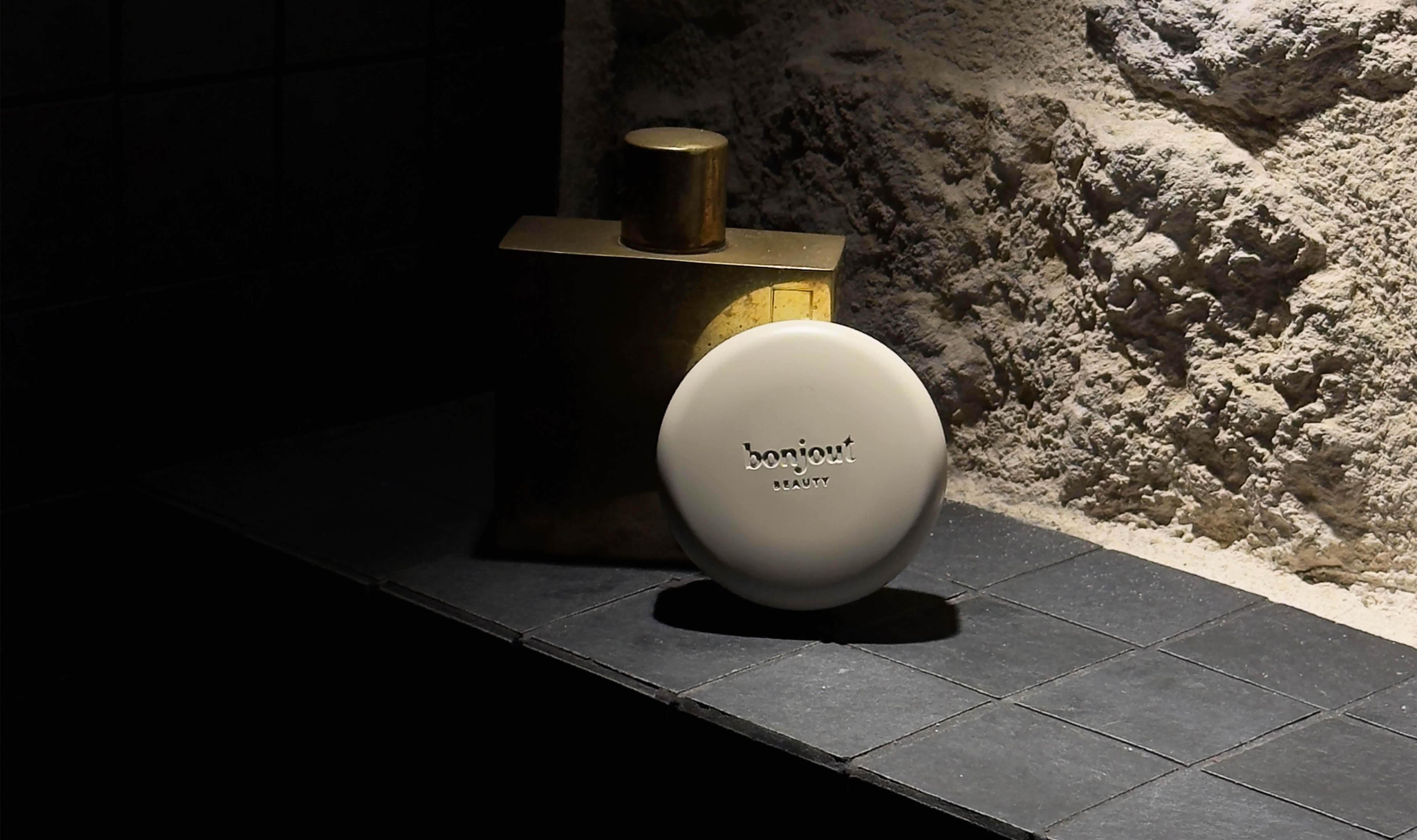Bonjour mes amies! After fifteen years of perfecting the art of skincare in my Parisian clinic, I've discovered that the most transformative facial experiences often happen not in sterile treatment rooms, but in the intimate sanctuary of your own bathroom. Today, I'm pulling back the curtain on my professional protocols to help you create a spa-quality skin treatment that would make even the most discerning French aesthetician say "C'est magnifique!"

Understanding Your Canvas: The Art of Skin Assessment
Think of your skin as a beautiful painting that tells the story of your life – each line, each texture, each subtle change speaks volumes. Before we begin our professional at-home facial journey, we must become detectives of our own dermis. I always tell my patients that understanding your skin is like learning to speak French – it takes patience, observation, and the willingness to make mistakes along the way.
Stand before your mirror in natural light, preferably near a window where morning sun kisses your face gently. Examine your skin like you're studying a masterpiece at the Louvre. Notice the T-zone – is it gleaming like the Seine at sunset, indicating excess oil? Or perhaps your cheeks feel as tight as a Parisian's schedule, suggesting dehydration? This assessment will guide every step of our DIY facial protocol.
 The Sacred Ritual of Preparation: Setting Your Stage
The Sacred Ritual of Preparation: Setting Your Stage
Il faut battre le fer pendant qu'il est chaud – we must strike while the iron is hot! The foundation of any successful self-care skincare ritual begins with creating an environment that whispers luxury. Transform your bathroom into a petit spa by dimming harsh lights, lighting a candle (lavender from Provence works wonders), and playing soft music that makes your soul dance.
Begin with the most fundamental step: removing makeup and surface impurities. Think of this as peeling away the layers of your day, like removing a winter coat when you step into a warm café. Use a gentle oil-based cleanser first – I adore those that melt makeup like butter melting on warm bread. Follow with a water-based cleanser to remove any remaining residue. This double cleansing method is the cornerstone of professional techniques used in the finest European spas.
 The Dance of Exfoliation: Revealing Your Inner Glow
The Dance of Exfoliation: Revealing Your Inner Glow
Exfoliation is perhaps the most misunderstood step in the facial steps sequence. Many approach it like they're scrubbing stubborn wine stains from a tablecloth – quelle horreur! Instead, think of exfoliation as a gentle waltz with your skin, not a frantic can-can.
For my sensitive-skinned clients, I recommend enzyme-based exfoliants that work like tiny Pac-Men, gobbling up dead skin cells without the abrasive drama. Those blessed with resilient skin might indulge in gentle physical exfoliants, but always with the touch of a butterfly landing on a petal. Work in circular motions, starting from your décolletage and moving upward – always upward, fighting gravity with grace.
Chemical exfoliants, particularly those containing alpha hydroxy acids, work like time machines for your skin. They dissolve the cellular glue that holds dead skin together, revealing the fresh, dewy complexion hiding beneath. Start slowly – once a week is plenty for beginners. Your skin needs time to adapt, like adjusting to a new perfume.
 The Steaming Ceremony: Opening Nature's Doors
The Steaming Ceremony: Opening Nature's Doors
Voilà the moment where we truly embrace the spa atmosphere! Steam is like a gentle key that unlocks your pores, preparing them for deeper cleansing and treatment absorption. Fill a large bowl with hot water – not scalding, but comfortably warm like a summer evening in Nice. Add a few drops of essential oil (rose for mature skin, tea tree for blemish-prone complexions) and create a tent with a soft towel over your head.
Breathe deeply for five to seven minutes, allowing the aromatic steam to perform its magic. This isn't just about opening pores – it's meditation, relaxation, and treatment all wrapped into one heavenly moment. Your skin will become as receptive as a perfectly prepared canvas awaiting an artist's brush.
Masking: The Pièce de Résistance
Choosing the right mask is like selecting the perfect wine to accompany dinner – it must complement, not compete. Clay masks work magnificently for oily skin, drawing out impurities like a magnet attracts metal filings. Hydrating masks containing hyaluronic acid or ceramides are heaven-sent for dry skin, plumping and smoothing like morning dew on rose petals.
Apply your chosen mask with the precision of a French pastry chef decorating éclairs. Avoid the delicate eye area and work in thin, even layers. This is your time to lie back, perhaps with cucumber slices over your eyes (yes, the cliché exists for good reason!), and let the mask work its alchemy for fifteen to twenty minutes.
Extraction Excellence: When Less Becomes More
Attention! This is where many well-intentioned facial enthusiasts go astray. Professional extraction requires skill, sterile conditions, and proper tools. At home, limit yourself to only the most obvious, surface-level blackheads that practically beg for removal. Wrap your fingers in tissue, apply gentle pressure on either side of the blemish, and stop immediately if nothing emerges easily.
Remember, aggressive extraction can lead to scarring, broken capillaries, and inflammation that takes weeks to heal. When in doubt, leave it to the professionals – your skin will thank you later with fewer battle scars.
 The Finishing Symphony: Serums, Moisturizers, and Protection
The Finishing Symphony: Serums, Moisturizers, and Protection
The final movements of our professional at-home facial are like the crescendo of a beautiful symphony. While your skin is still slightly damp from mask removal, apply a serum targeted to your specific concerns. Vitamin C for brightness, niacinamide for pore refinement, or retinol for anti-aging (though never retinol during daytime treatments – c'est interdit!).
Follow with a moisturizer that feels like silk against your newly pampered skin. For mature skin, seek formulations rich in peptides and antioxidants. Younger skin might prefer lighter textures that hydrate without overwhelming. The key is listening to your skin's whispers rather than forcing it to shout.
 Customizing Your Approach: Honoring Your Unique Skin Story
Customizing Your Approach: Honoring Your Unique Skin Story
Every skin type deserves a personalized approach, like tailoring a couture gown to fit perfectly. Sensitive skin requires the gentleness of a lullaby – shorter contact times, fragrance-free formulations, and plenty of soothing ingredients like chamomile or oat extract. Oily skin can handle more active ingredients and longer treatment times, while dry skin craves rich, nurturing formulations that restore the skin's protective barrier.
Combination skin – ah, la complexité! – requires the diplomacy of treating different areas according to their individual needs. Use clay masks only on the T-zone while applying hydrating treatments to drier cheek areas.
The Rhythm of Renewal: Frequency and Timing
A weekly professional at-home facial becomes a cherished ritual, like Sunday morning croissants or evening walks along the Seine. Your skin's renewal cycle takes approximately 28 days, so consistency trumps intensity every time. Mark your calendar, set reminders, make it as non-negotiable as your morning café.
Timing matters tremendously – evening treatments allow active ingredients to work their magic while you sleep, undisturbed by environmental stressors. Sunday evenings work beautifully, preparing your skin for the week ahead while providing precious self-care time.
Common Pitfalls: Les Erreurs to Avoid
Mon dieu, the mistakes I've witnessed in my practice! Over-exfoliation tops the list – more is not better when it comes to acids and scrubs. Your skin should feel smooth and refreshed post-treatment, never raw or irritated. If redness persists beyond an hour, you've been too enthusiastic.
Using expired products is another cardinal sin. That serum hiding in your medicine cabinet for two years? À la poubelle! Expired skincare can cause irritation, breakouts, and diminished efficacy.
The Science of Self-Care: Why Professional Protocols Work at Home
The beauty of adapting professional techniques for home use lies in understanding the science while embracing the ritual. Professional treatments work because they follow logical sequences, use appropriate concentrations, and respect the skin's natural processes. When we recreate these conditions at home, we're not just applying products – we're conducting a symphony of cellular renewal.
Your Skin's Love Letter: Results and Expectations
After your first few treatments, expect your skin to feel softer, appear brighter, and develop that enviable "French girl glow" that has nothing to do with genetics and everything to do with consistent, loving care. Fine lines may appear diminished, pores refined, and your overall complexion more even-toned.
Patience, ma chérie! Real transformation takes time. Like learning to appreciate wine or master French pronunciation, beautiful skin is a journey, not a destination. Embrace the process, celebrate small improvements, and remember that the most important ingredient in any skincare routine is self-love.
Your bathroom may not have marble countertops or crystal chandeliers, but with these professional protocols, it can provide spa-quality results that rival any Parisian treatment room. After all, the most beautiful skin comes not from expensive treatments, but from consistent care, quality ingredients, and the gentle touch of someone who truly loves the face in the mirror.
Bon courage on your skincare journey, and remember – you are your own best aesthetician!
📚 Continue Reading

Candelilla Wax: A Natural Wonder for Your Skin
Candelilla wax, a natural plant-derived wax, offers numerous skin benefits as a sustainable and effective ingredient in cosmetics, acting as an emollient, emulsifier, and protective barrier.

Blue Bird Hibiscus Native Cells in Skin Care
Bonjout Beauty's article discusses the potential benefits of blue bird hibiscus native cells, a new ingredient, for improving skin's appearance and health.

What is Trans-Epidermal Water Loss (TEWL) and why does it matter for skin care?
Trans-epidermal water loss (TEWL) is the evaporation of water from the skin's surface, and managing it is crucial for maintaining healthy, hydrated skin and preventing dryness, irritation, and premature aging.

